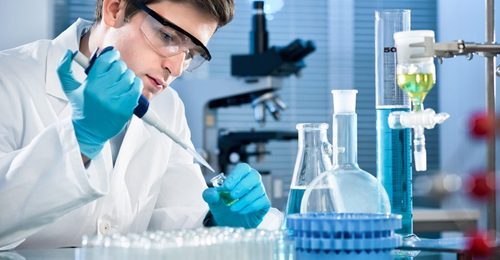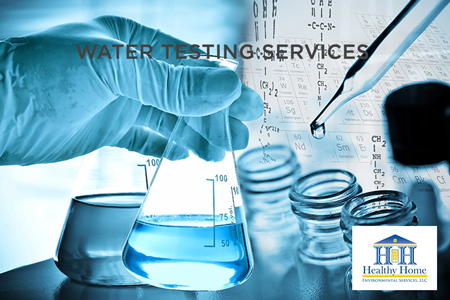Why You Should Choose Our Water Testing Service for Your Home
Why You Should Choose Our Water Testing Service for Your Home
Blog Article
Discover What Is Consisted Of in Water Examining and Just How It Ensures Safe Drinking Water
Comprehending the ins and outs of water screening is crucial in making certain the top quality and safety and security of our alcohol consumption water. Via a meticulous examination of physical, chemical, and microbiological aspects, water testing identifies potential contaminants that could pose wellness threats. From the visibility of hefty metals to damaging bacteria, each examination part plays a critical duty in keeping the stability of our water system. Advanced methods like chromatography and spectrometry enhance the accuracy of these evaluations. Yet, exactly how do these processes translate right into the regulative structures that ensure security in our everyday usage?
Trick Parts of Water Screening
Water screening is an essential process that involves a number of essential elements to ensure the security and top quality of drinking water. Additionally, making certain the pH balance of water is crucial, as it impacts the water's corrosiveness and the efficiency of sanitation procedures.
Another substantial component includes microbiological analysis, where water examples are analyzed for the visibility of microbes such as bacteria, infections, and protozoa. This evaluation is important to determine organic hazards that might posture health dangers if consumed. Moreover, chemical analyses are conducted to identify organic and inorganic materials, such as hefty steels, nitrates, and chemicals, that may be present in the water system.

Detecting Harmful Contaminants
Detecting harmful impurities in alcohol consumption water is a fundamental facet of securing public wellness. This process includes identifying prospective threats that can jeopardize the quality and security of water products. Pollutants can vary from microorganisms such as germs, infections, and protozoa, to inorganic compounds like lead, arsenic, and nitrates, along with organic contaminants consisting of pesticides and industrial chemicals. Each kind of contaminant positions distinctive health risks, making their discovery crucial to guarantee the water eaten by the public is secure.
Water testing for contaminants is usually carried out by governing firms and water energies, using a mix of field sampling and lab evaluation. These analyses are designed to spot both normally taking place substances and anthropogenic contaminants that may have gone into the water supply with farming runoff, commercial discharge, or aging infrastructure. Regular monitoring is important, as contamination levels can fluctuate due to ecological adjustments, seasonal variants, or human activities.
The identification of hazardous contaminants informs essential activities, such as water treatment interventions or public advisories, to reduce risks. Early detection is vital to prevent adverse health effects, ranging from gastrointestinal diseases to long-lasting problems like cancer cells, thereby making sure the continued security of alcohol consumption water.

Chemical Evaluation Methods
In the realm of making sure secure drinking water, chemical analysis methods play a crucial role in determining and measuring impurities. These methods are vital for identifying a wide range of chemical substances, consisting of hefty steels, chemicals, and commercial pollutants, which can pose significant health and wellness dangers.
Gas chromatography-mass spectrometry (GC-MS) is an additional essential technique, particularly for read review organic compounds. dig this It separates complicated blends and determines unpredictable and semi-volatile natural substances, ensuring that pollutants like benzene and toluene are within secure limits. High-performance fluid chromatography (HPLC) is similarly utilized for non-volatile materials, including particular pesticides and pharmaceuticals.
Ion chromatography is used to identify focus of anions and cations, such as nitrates and sulfates, which are critical in evaluating water quality. These chemical analysis strategies jointly make sure that drinking water remains safe by spotting deviations from developed pureness norms, thereby safeguarding public wellness. Making certain accuracy and accuracy in these tests is extremely important to keeping the stability of water security assessments.
Microbiological Testing Approaches
Exact microbiological screening is important for safeguarding public health and wellness by making sure that drinking water is cost-free from dangerous microorganisms. This procedure includes spotting and enumerating microbes such as bacteria, infections, and protozoa that may contaminate water materials. Common virus include Escherichia coli, Giardia, and Cryptosporidium, each posturing Full Article considerable health dangers.
Numerous techniques are used in microbiological testing to recognize these dangers. The membrane layer filtering strategy is often made use of, involving water passing via a filter that captures germs, which are after that cultured to determine their visibility and concentration. Additionally, the multiple-tube fermentation approach allows the metrology of coliform microorganisms making use of a series of dilution and incubation steps.
Innovations in technology have presented molecular strategies such as polymerase chain reaction (PCR), which permits the highly certain and quick discovery of pathogens by enhancing their hereditary product. Enzyme-linked immunosorbent assays (ELISA) also provide a technique to identify virus by identifying particular proteins or antigens.
These varied techniques are crucial for thorough water quality assessment, guaranteeing that water treatment processes are efficient and that circulation systems preserve security. By utilizing these microbiological testing approaches, possible health risks can be identified and minimized promptly.

Relevance for Public Wellness
Making sure the microbiological security of drinking water straight affects public health and wellness by avoiding the spread of waterborne diseases. Virus such as germs, viruses, and protozoa can lead to ailments like cholera, dysentery, and intestinal infections (Well water testing services). The execution of detailed water testing methods is vital in identifying and mitigating these dangers, thus guarding neighborhoods from potential episodes
Routine water screening not only detects microbial impurities however also examines chemical and physical parameters that can impact health. As an example, extreme levels of nitrates or hefty metals such as lead can present major wellness dangers, particularly to at risk populaces like infants and expectant women. By identifying these dangers early, water screening enables timely treatments, making sure the water system remains within risk-free intake standards.
In addition, water screening plays an essential function in preserving public confidence in local water systems. For plan manufacturers and health authorities, the data derived from water testing educates choices on framework investments and public wellness approaches, ensuring sources are routed where they are most needed.
Final Thought
Water testing offers as an essential mechanism for making certain the safety and security and high quality of drinking water through thorough analysis of its physical, chemical, and microbiological residential or commercial properties. By spotting hazardous impurities, such as hefty steels and chemicals, and utilizing innovative strategies like chromatography and spectrometry, water testing facilitates the recognition of prospective health threats. The implementation of strenuous screening protocols is vital for keeping compliance with safety requirements, ultimately guarding public health and wellness and strengthening confidence in local water systems.

By recognizing these risks early, water screening makes it possible for timely interventions, guaranteeing the water supply stays within secure intake standards.
Water testing serves as a vital device for making certain the safety and quality of drinking water with detailed evaluation of its physical, chemical, and microbiological homes.
Report this page